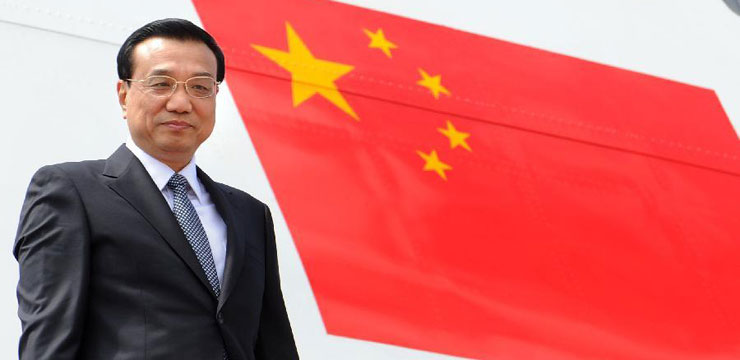Have yuan, will travel far and wide
Updated: 2013-10-14 00:02
By ALFRED ROMANN in Hong Kong For China Business Weekly (China Daily)
|
|||||||||||
The rising value of the yuan has had a curious side effect: It is often cheaper for Chinese tourists to travel to exotic foreign destinations than it is to travel to China's popular resorts.
A Beijing resident looking for an island break, for example, may find it more economical to go to Sri Lanka than to Hainan.
Over the next year, the number of outbound trips from China will top the 100 million mark for the first time in history. The rising number of Chinese people traveling abroad has grown even faster than predicted. The UN World Tourism Organization (UNWTO) had expected China to hit this particular milestone in 2020. This growth will further cement the position of Chinese tourists as the biggest global spenders, ahead of tourists from the US and Germany.
The main driver of this growth in spending is the rising demand for international travel, particularly self-organized trips to destinations in places such as Africa and the smaller European or Asian countries that are increasingly reaching out to Chinese tourists.
"Barring wild-card events, China's outbound travel market will increase by 17 percent, the same rate as has been reported for the first five months of 2013," said Wolfgang Georg Arlt, director of the China Outbound Tourism Research Institute (COTRI).
The China Outbound Tourism Index, which is produced by COTRI monthly, dropped slightly in August from a month earlier, but the performance over the last year has been higher than a year earlier.
The Germany-based institute now expects 106 million border crossings out of China throughout the second half of 2013 and the first half of 2014 and total spending abroad of $129 billion.
Even if the figures include overnight trips to Hong Kong and Macao, which would not be considered international travel, the growth has been significant.
In 2012, there were 83 million border crossings out of China as more people there took advantage of fewer restrictions on international travel and the growing purchasing power that many in China enjoy.
The rising value of the yuan compared with the dollar means that the same salaries that once made international travel prohibitive now put such trips within easy reach.
This is particularly true when traveling to countries in the developing world, such as Sri Lanka or Iran, which have emerged as popular destinations for the more adventurous young Chinese people looking to see something other than Paris or New York.
The China National Tourism Administration (CNTA) is actively promoting international travel and has already given 148 countries "approved destination status", said Shao Qiwei, the CNTA's chairman, during a meeting with UNWTO earlier this year.
This bodes well for the three main domestic airlines in China, which are facing headwinds in their search for profitability and have, so far, missed out on much of the recovery that has helped airlines in North America and Europe.
The International Air Transport Association (IATA) recently revised down its outlook for the global airline industry, but the performance this year has nevertheless been much better than in 2012. The bottom lines of airlines around the world are improving, even if the pace of improvement slowed during the second quarter of the year.
IATA now expects global airline industry profits this year to come in at $11.7 billion on revenues of $708 billion. In June, the Montreal-based organization had predicted profits for the year to be $12.7 billion. Despite the revision, the performance this year is much better than in 2012, when airline profits were $7.4 billion.
"The story is largely positive. Profitability continues on an improving trajectory," said IATA's director general and CEO Tony Tyler, the former chief executive at Cathay Pacific. "But we have run into a few speed bumps. Cargo growth has not materialized. Emerging markets have slowed. And the oil price spike has had a dampening effect."
Most of the growth is expected to come out of airlines in North America and Europe. Airlines in North America are expected to double their 2012 profits to $4.9 billion. Airlines in Europe are expected to book record profits of $1.7 billion.
IATA's most visible downgrades are among Asia-Pacific airlines. IATA downgraded its profit expectations for airlines in the region by $1.5 billion to $3.1 billion because of slower growth in emerging economies and their significant exposure to the cargo business, which has been hit by the flat growth.
While the one highlight in the region has been the strengthening of the domestic market in China, the biggest airlines in the country are finding it difficult to keep pace with their global peers.
The country's three big airlines — China Southern, China Eastern and Air China — are struggling with a difficult environment. Economic growth in China has slowed (although it now appears to be once again gaining some ground) and the price of oil has jumped over the past few months.
China Southern carried 9.13 million passengers in August, a 10.2 percent jump over the same month a year earlier. Between January and August, the airline carried 61.5 million passengers, up 6.7 percent over a year earlier. Air China recorded turnover of 46 billion yuan in the first half of 2013, down 2 percent from 2012. Passenger revenue dropped 1.68 percent and cargo revenue fell 2.93 percent. Operating expenses rose almost 1 percent.
All told, operating profits dropped 49 percent to 1.43 billion yuan during the first six months of the year, but net profits rose 9.9 percent thanks to currency appreciation. The airline carried 37.45 million passengers in the first half of the year, an increase of 7.78 percent.
China Eastern saw a 23 percent drop in net profits to 763 million yuan because of weaker domestic demand, although it made some gains from currency exchanges. But the struggling airlines are holding on to expectations of a bright future as outbound tourism becomes commonplace and air travel more accessible. Already, about 5 percent of the population is likely to travel abroad, according to COTRI. That's about 70 million potential customers, more people than there are in France or the United Kingdom.
Last year, China's tourism revenue hit 2.57 trillion yuan, up 14 percent from 2011. About 132 million inbound tourists generated $50 billion in revenue, about the same as they did in 2011.
A significant change this year, according to COTRI, is that China's new leadership is encouraging outbound tourism for the first time. As a result, outbound tourism is growing fast. The 83 million border crossings out of China last year represented an 18 percent hike from 2011. And growth is likely to continue. Chinese tourists spent $102 billion abroad in 2012, which makes them the biggest tourism spenders in the world. This year, they could spend around $110 billion.
Related Stories
Yuan clearing bank in sight 2013-10-12 07:08
Yuan to be fully convertible in the zone 2013-09-28 08:59
Taiwan making waves in yuan activity: Report 2013-09-10 07:00
Yuan to play a bigger role in Central Asia 2013-09-04 07:44
Today's Top News
86 trapped at Mount Qomolangma camp amid snow
Senate leader 'confident' fiscal crisis can be averted
China's Sept CPI rose 3.1%
Li Peng's daughter denies 'rumors'
No new findings over Arafat's death: official
Working group to discuss sea issues
Nobel economists rarely get to influence policy
Trending news across China
Hot Topics
Lunar probe , China growth forecasts, Emission rules get tougher, China seen through 'colored lens', International board,
Editor's Picks

|

|

|

|

|

|





